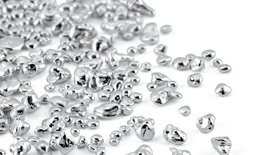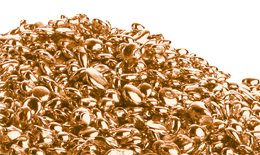Have you considered the properties of metal when designing your bespoke engagement ring? This is a piece of jewellery you are going to wear every day for the rest of your life, it needs to go the distance, live up to your expectations and your lifestyle.
Here at Hot Pink we work with several metals, our most popular being platinum and palladium. However we design rings in gold, white gold, rose gold, platinum, palladium and silver. No metal is 100% pure, they are a combination of metals, otherwise known as an ‘alloy’. You will often hear metal qualities measured in karat’s, for example 9kt yellow gold, 14kt yellow gold and so on. This is the rating of purity applied to the metal. In the UK we usually use 18kt gold.
Pure gold is too soft for everyday wear, so it is ‘alloyed’ with various other metals to give strength, colour and durability. Karat is the representation of the purity, how much of the pure metal is in the piece. In gold, for example, Karat’s are expressed in 24ths, so 24k gold is pure gold.
Please scroll down to view the various alloys of precious metals and some information about them.
Metal compositions
Silver
92.5% pure silver
7.5% copper
Silver is a soft metal so copper is added for strength. This is also why silver tarnishes as the copper is susceptible to oxidation and natural sulphur in the air. You will notice from time to time your silver jewellery will become dull and black, a quick polish with a silver polishing cloth will have them looking brand new. Silver is commonly used for contemporary jewellery as it is relatively inexpensive in comparison to other metals. We offer a Proposal service in silver.

Silver grain used for casting
18ct White Gold
75% gold
25% Platinum or Palladium
Gold is naturally yellow and has other alloys added to give it a whiter colour. Nickel used to be added to white gold and has now been replaced by Palladium as many people used to be allergic to nickel leaving the skin itchy and green. Palladium is now used for its pure white properties, however white gold is rhodium plated to give it a bright white finish. This will need periodically re plating as a yellow tinge will start to appear.
White gold is perfect for setting all gemstones and diamonds in. Many people choose white gold as it looks like platinum without being too weighty or expensive.

White gold wedding band

White gold and diamond dress ring
18ct Rose Gold
75 % gold
25% copper
Rose gold is very similar to the composition of white gold except the palladium is replaced by copper. This is purely for aesthetically reasons as it gives a lovely pink colour. Rose gold is a popular choice as it is very warming and compliments white diamonds amazingly. A lot of vintage designs work well with rose gold. Unlike white gold rose gold does not need re plating.

Rose gold grain used for casting
Palladium
95% palladium
5% ruthenium
Palladium is part of the platinum group and a relatively new metal for jewellers to work with. It holds similar characteristics to platinum including its pure white colour, however it isn’t as dense and palladium is lightweight and hypo-allergenic. A great alternative to platinum palladium is recommended for men’s wedding bands as it is extremely durable without being as expensive or heavy.

Palladium wedding band with centre oxidised detail

Satin finish palladium band with polished grove
Platinum
95 % platinum
5% other metals such as iridium, palladium, ruthenium and other alloys.
Platinum is seen as the superior metal due to its purity and density. The purity of platinum makes it naturally hypo-allergenic. This is still the most sought after metal when creating a bespoke piece of jewellery and has a very luxurious feel to it. Platinum is the strongest and most durable of jewellery metals and although it retains its natural white colour without interference, the ‘wearing’ of platinum jewellery imparts its own ‘patina’ onto it, often desirable, but if not, a quick buff will restore its gleam.
Platinum Ingot
All of the above has been given as an introduction to the metals Hot Pink work in. If you wish to discus which metal to use in your bespoke ring please don’t hesitate to get in touch where one of our design experts will be happy to help.






